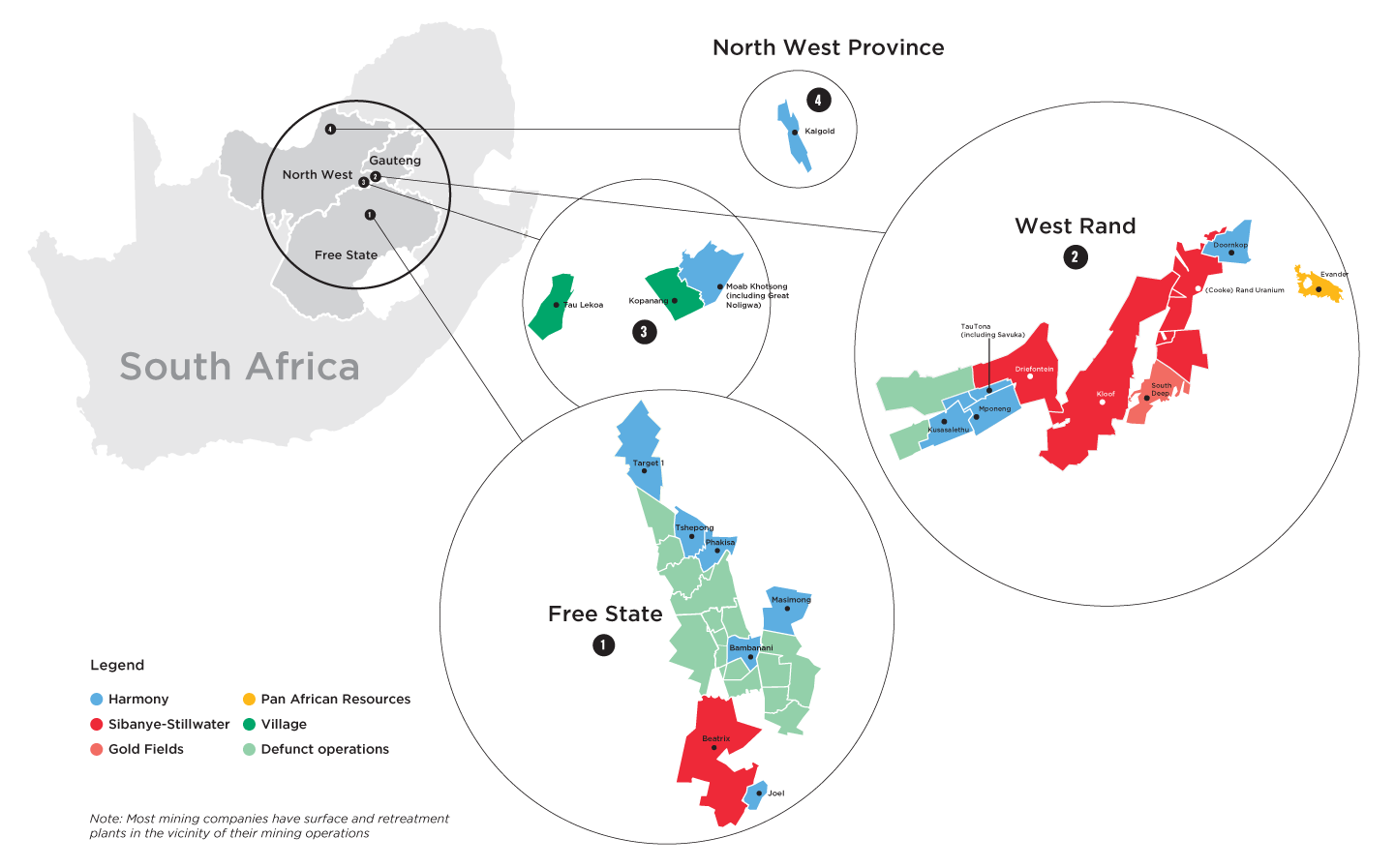Key facts and figures
- The Witwatersrand Basin remains the world’s largest gold resource
- In 2022, the gold sector employed 93,841 people who collectively earned R28.9 billion
- Gold production of 84 tonnes
- At the current gold price more than half of the South African gold mining industry is marginal
Location and geology

The Witwatersrand gold-producing area in South Africa is underlain by an underground geological formation also known as the Witwatersrand Basin. It lies on the Kaapvaal Craton, and is one of the world’s largest gold placer deposits. This elliptical basin stretches over an arc of roughly 400km traversing across the Free State, North West and Gauteng provinces in South Africa. Gold occurs only along the northern and western margins of this basin, but not in a continuous band.
The basin is covered by younger sedimentary and volcanic rocks such as those making up the Ventersdorp and Karoo Supergroups. The underlying sedimentary rock has been laid down over a period which ended about 2,700 million years ago when widespread faulting resulted in extensive lava flows covering the Witwatersrand Basin.
The gold was embedded in a conglomerate and, at first, it was assumed that this was alluvial gold in an old riverbed. It was then found that the conglomerate, or conglomeratic zone, was part of a sedimentary succession. It was traced east and westward for a continuous distance of 50km and became known as the Central Rand Gold Field.
The gold in this basin occurs in the coarse grained conglomerates forming the upper portions of the “Witwatersrand Supergroup” that hosts roughly 7,000m of sedimentation. It is found here in association with uranium, quartz, carbon seams, phyllosilicates and pyrite. The mineralisation of the Witwatersrand reefs is extensive and a total of 70 ore minerals, including diamonds, have been documented from the Witwatersrand conglomerates.
After 120 years of mining on the Kaapvaal Craton, operations in this area have reached depths of 4,000m. At this depth, the natural rock temperatures reach about 50°C and the virgin vertical rock pressures of the order of 100MPa provide an indication of the enormity of the challenges and hazards facing mining.
GOLD MINING IN SOUTH AFRICA
The discovery of gold in the late 19th century spawned the development of the city of Johannesburg, Egoli, or the City of Gold, and numerous towns around the gold diggings, including Barberton and Pilgrim’s Rest. In the 20th century, the large gold mines on the West Wits line were established, and towns like Carletonville and Klerksdorp became important and busy centres around the world-famous gold mines: Kloof, Driefontein and Western Deep Levels. For many years, South Africa was the world’s primary gold producer.
The glory days of the gold sector started waning in the early 21st century as mines went deeper to find the rich reef patches. At the same time, the gold price had dropped significantly from the previous highs, and the global economy hit headwinds, culminating in the global financial crisis in 2008. Although the crisis has eased in many countries, the effects on the South African mining industry have been profound and enduring.
Employment in the gold sector has continued to decline since the 1980s with around 93,841 workers currently employed. At the same time, productivity has declined and wages have risen. Despite this, gold mining activities remain a mainstay of employment in many communities around the country, and every employee in the gold sector supports between five and 10 other dependants. On the upside, every direct job in the mining sector results in two indirect jobs being created elsewhere.
![Logo MCSA [logo]](/templates/chamber/images/logo.svg)

